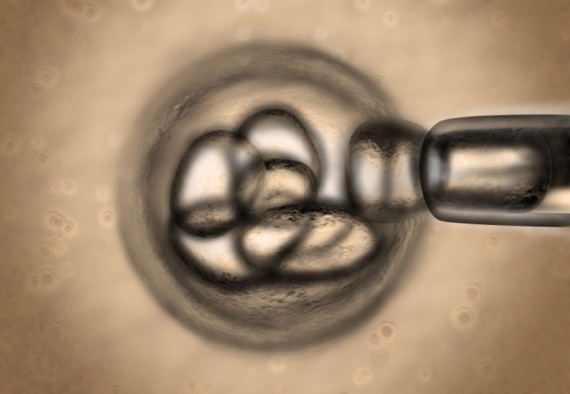Appeals Court Lifts Ban On Federal Funding Of Stem Cell Research
The latest round in the legal battle over federal funding of embryonic stem cell research hands a victory to the scientific community:
WASHINGTON—A federal appeals court ruled Friday that the federal government can continue to fund research involving human embryonic stem cells, a significant legal victory for the Obama administration.
The divided ruling, by the U.S Court of Appeals for the District of Columbia Circuit, overturned a trial judge’s surprise ruling in 2010 that barred funding for the research.
The appeals court, in a 21-page decision, said the National Institutes of Health reasonably concluded that government funding for embryonic stem-cell research isn’t prohibited by a 1996 law that bars the use of federal money for research in which an embryo is destroyed.
The court’s majority also agreed with the Obama administration’s arguments that barring the funding would be a substantial blow to embryonic stem-cell research by blocking new projects and undermining existing ones.
The court said researchers’ “investments in project planning would be a loss, their expenditures for equipment a waste, and their staffs out of a job.”
(…)
Friday’s ruling is the latest chapter in a case that has made headlines since August 2010 when U.S. Chief District Court Judge Royce Lamberth in Washington issued a preliminary injunction that halted government funding for the research.
Judge Lamberth had rejected the Obama administration’s argument that embryonic stem-cell research itself didn’t result in the destruction of embryos.
I’m nowhere near being familiar enough with the legal issues in this case to be able to comment on them, but I thought it was interesting that the lawsuit that started this battle wasn’t brought by pro-life activists, which is what you might have expected:
The plaintiffs in the lawsuit, scientists James Sherley and Theresa Deisher, contended that Mr. Obama’s loosening of embryonic stem-cell funding rules had unfairly diverted money away from adult stem-cell research, their specialty.
So basically it was one group of scientists fighting with another group of scientists.
No word yet on whether this case is likely to be appealed to the Supreme Court.







Well then wouldn’t it be more accurate to say, “…hands a victory to one side of the scientific community”?
Scientists fighting each other in court? What the hell? Where are the death rays? Where are the genetically-modified killer bats? Where’s the robot?
Just answer me that: where is the robot?
Michael,
Obviously Robots could not be used in a scientific fight if that fight were to in any way mean that humans could be harmed. At most, Robots could be used as body guards fulfilling the first law, however it is more likely that a Robot with any 2nd generation positronic brain (or later) would disarm both scientists of any sort of death ray or killer organism.
That is, of course, only positing that the fight between the scientists is one of petty issues. If the robots were to decide that embryonic stem cell research is either the salvation of humanity (thus siding with those scientists) or the doom of humanity (thus siding with the adult stem cell scientists), then the Zeroth law would take effect:
Which technically means robots could harm a human if doing so was the only way to stop humanity itself from being harmed.
Duh.
“So basically it was one group of scientists fighting with another group of scientists.”
So really this was just two different interest groups fighting a rent seeking battle?
Neil:
I have a seven word riposte:
“Open the pod bay doors HAL.”
OK, six.
Well, if one is really pedantic, HAL was an AI but technically not a Robot in the I Robot sense.
Or you can just argue that Asimov didn’t account for the Frink Chaos Theory:
Or you can just watch it starting at 17:20 here: http://www.megavideo.com/?v=AIPJC2GF
,the kind that works and isn’t evil.
Fixed that, for,um,somebody:)
Fer chrissakes Doug, it is so damn infuriating sometimes how lazy you are. What would it take – like 30 seconds to go to Mr. Google and actually dredge up some value to add to this issue? No, the WSJ says something, and you just transcribe it.
One of the first resutls you get is from a Catholic newsletter that excerpts and links to a profile about one of the “scientists”:
One of the quotes from the linked article :
No Doug, this is not a simple dispute between two groups of scientists fighting over research money. It is part of the religious crusade by prolifers, as anyone with at least half a brain would have suspected, and at least spent a minute checking out before posting about it.